In the first part of this article, we explored some of the factors that help form our attitude toward knife use and knife defense and how they may negatively influence our ability to protect ourselves. We recognized that the peculiar intensity of our emotional reaction to the knife is most likely based on biases formed through familiarity with the tool, prior negative experiences with it, and the intimate nature and gruesomeness of a knife attack.
We also realized that our reluctance to hurt others with a knife is due to innate psychological responses that inhibit our willfulness to hurt other humans, particularly in close proximity and with a knife.
Armed with this understanding, we’ll explore ways to successfully integrate it into our training programs in order to mitigate these detrimental effects to our ability to defend ourselves as efficiently as possible.
Since these biases and inhibiting emotions condition our attitude toward the knife, our priority must be to change our mindset. Mindset is a habitual or characteristic mental attitude that determines how we will interpret and respond to situations.
“Scholars Zanna and Rempel view attitude as having many causes. They view attitude not as something stable or predisposed to the individual, but as something that might change based on internal or external cues…. Attitude is generated from cognition (a source of information), affect (feelings, emotions associated with an object that can influence attitude), and past behaviors. Individuals evaluate new sources of information against previous or other information and evaluate it as favorable or unfavorable.” (“Attitudes: A New Look at an Old Concept,” M.P. Zanna and J.K. Rempel, 1988, in The Social Psychology of Knowledge, Daniel Bar-Tal and Arie W. Kruglanski)
For a long time, neuroscientists thought the adult brain to be set in its ways and resistant to change. The last few decades of research have made clear that the opposite is true. The organization of brain circuitry is constantly changing as a function of experience. Modern researchers have demonstrated that the brain continues to create new neural pathways and alter existing ones in order to adapt to new experiences, learn new information, and create new memories. This quality is defined as neuroplasticity, and it refers to the brain’s ability to change and adapt as a result of experience.
This is great news for us: if mindset is adaptive in nature, it means it can be influenced with appropriate training. As stated, our goal is to change the students’ mindsets so their thinking results in new desired behaviors. The question now is, how to best affect this change?
COGNITION
First we need to provide the students with as much information about the nature of and reasons for such emotions and explain the benefits of changing how we respond to the knife threat stimulus.
“Fostering understanding and conviction: This is where the case for change plays a key role. The change story should paint the picture of a future that is more attractive than the present, and demonstrate clearly how the desired change in mindset and behavior will enable people to accomplish it.” (“Influencing Mindset and Behavioral Changes,” Jess Jacoby, Emergent Journal)
Sharing the information that was discussed in part one of this article will go a long way toward making the students realize it is normal to feel a certain way when confronted with a knife. They are not particularly helpless, weak, or cowardly. Explaining how it is possible to change that mindset and manage those emotions should motivate them to learn more beneficial responses to this deadly threat.
AFFECT
As we have seen, emotions play a huge role in determining our actions. One of the strongest motivators for taking action and responding to a problem is the feeling of self-efficacy. As psychologist Albert Bandura has defined it, self-efficacy is one’s belief in one’s ability to succeed in specific situations or accomplish a task.
The students’ sense of self-efficacy can play a major role in how they approach goals, tasks, and challenges. One of the quickest ways to affect mindset change is to improve the students’ self-efficacy.
Another important contributor to our willfulness to take action is response-efficacy: the confidence in the effectiveness of the recommended response we are about to perform.
Our brain sees an attacker with a knife as a problem to be solved; our emotional responses amplify the perceived danger. Whether we succumb to the threat or rise to the challenge depends greatly on the two factors discussed above.
If we believe we don’t have an adequate solution or that we cannot apply one successfully, our mindset will be negative/reactive, our resolve weak, and fear may quickly turn into panic. If we believe our trained responses can positively affect the outcome (response-efficacy), and that we are capable of performing them (self-efficacy), our mindset will be positive/proactive and our resolve strong.
How do we set our students up for success in a knife defense incident? Do past behaviors play a role in this?
PAST BEHAVIORS
Our emotions, attitude, and senses of self-efficacy and response-efficacy are strongly influenced by our prior experiences, by the memories of past behaviors. If I’m facing a problem I have already solved in the past, I will have a high degree of confidence not only in which learned response to apply, but also in my ability to perform it. The best way to strengthen the students’ mindset then would be to create multiple successful memories of past behaviors for each of them.
As mentioned earlier, our brain looks at a threat as a problem to be solved. Before we move forward, we need to understand how the brain solves problems and how it learns new things, so we can identify what type of training is best suited for our purpose.
Behavioral psychology researchers have found that the brain uses multiple strategies to problem solve.
Here are a few that are of particular interest to us:
- Trial and error: Several random responses are made until the correct one is finally made. (This is the basis of all problem solving, but we cannot afford to rely on it during a dangerous event.)
- Reproductive problem solving: Previous experience is used directly to solve a current problem.
- Analogy: A comparison between the current problem and some previous situation.
- Insight: A sudden understanding or “a-ha” experience, in which an entire problem is looked at in a different way. (We cannot rely on insight happening at the right time to stop a dangerous assailant.)
There is an important distinction between reproductive and analogical problem solving. In reproductive problem solving, the brain finds the behavior that solved the same exact problem in the past and applies it directly. Analogical problem solving finds the solution to the most similar problem stored in our memory and adapts it to the current one.
Both are aided by Positive Transfer Effect and the creation of Templates of possible responses developed through frequent and realistic training. Positive Transfer Effect refers to an improved ability to solve a problem because of relevant past experience. Templates are patterns of past behaviors stored in long-term memory that can be used as and when appropriate. These patterns can be accessed rapidly during an event since they use recognition instead of conscious analysis.
REALITY-BASED TRAINING
Based on this information, I propose that Reality-Based Training (RBT) is the methodology best suited to affect the changes we are looking for in our students.
“Simulation training is a technique (not a technology) to replace and amplify real experiences with guided ones, often ‘immersive’ in nature, that evoke or replicate substantial aspects of the real world in a fully interactive fashion. Simulation-based learning can be the way to develop students’ knowledge, skills, and attitudes, whilst protecting them from unnecessary risks.” (“Simulation-Based Learning: Just Like the Real Thing,” Fatimah Lateef, 2010)
A detailed explanation of RBT is outside the purview of this article, but here are some of the concepts and best practices that are fundamental to RBT so we can start from a common understanding of the basics of this training methodology, which can be used both as an evaluation tool and a learning tool.
Fundamental components of RBT:
- To define the goals of the exercise for each student.
- To precisely script the scenario to reflect those goals, taking into account all the possible variables in the student responses.
- Trained role-players who can follow the script, adapt to the variables, and perform “in-role coaching” when needed.
- A facilitator to help the students navigate the scenario to a successful resolution.
- A thorough debrief after each evolution.
And finally and most importantly, you have to run each student through each scenario until they are successful. Following these steps allows the students to face multiple realistic scenarios that deal with a similar problem (in our case, a threat with a knife) until they have developed the appropriate responses and applied them successfully. These memories of past behaviors will form templates in their long-term memory that will allow them to find the appropriate solutions to more scenarios than what they have been exposed to, by using analogical problem solving. Furthermore, memories of success have a positive emotional value attached to them, fostering more confidence in their implementation.
On an emotional level, this will increase the students’ sense of response-efficacy and self-efficacy, which should positively modify their mindset and resolve to be better prepared to face a knife-wielding threat.
On a performance level, they will come to the appropriate response more rapidly, making them safer, faster. RBT also helps with stress inoculation, but we’ll save that discussion for part three of this article.
If you are interested in learning more about RBT, I suggest purchasing Ken Murray’s DVDs Reality-Based Training and Maximizing Reality-Based Training or his book Training at the Speed of Life. Ken has been teaching RBT for law enforcement officers and at the highest level of the military for over 20 years. Find out more about his courses at the RBTA site. In addition, I.C.E. Training has developed an RBT instructor development course for civilian firearms instructors. Check the I.C.E. Training calendar for more info.
CONCLUSION
The best way to change how we interpret and respond to a threat with a knife is to train through multiple successful iterations of probable scenarios so that our perception of the danger and our emotional and physical responses to it will adapt and be informed by templates of successful responses instead of negative emotional biases that may hamper our ability to protect our loved ones and defend ourselves.
In part three, we will focus on some psychological factors that can help students manage their innate reluctance to use violence, as well as some drills to mitigate the particular revulsion they might feel about using a knife against another person even in a knife defense situation.
Posted by Alessandro Padovani
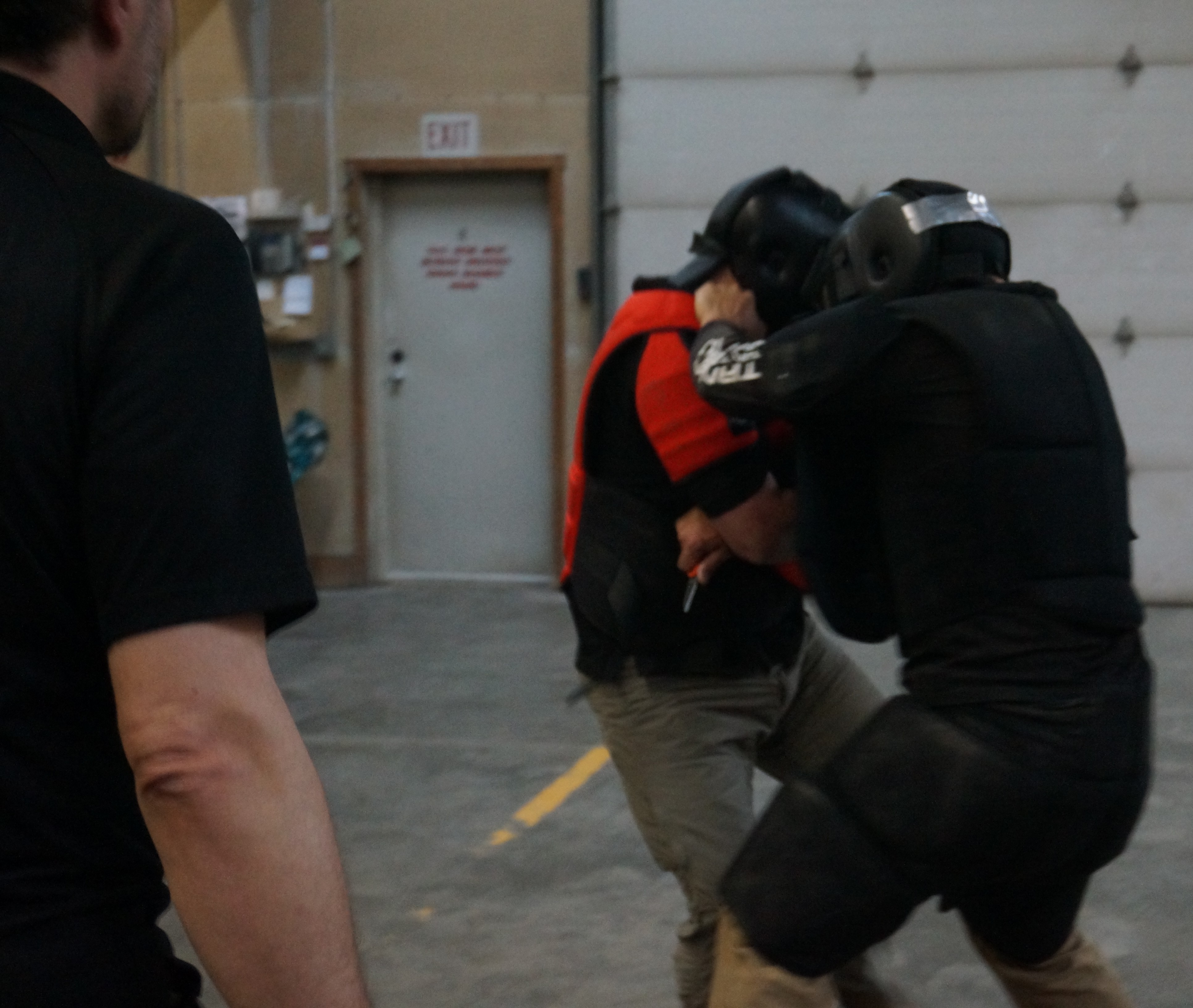
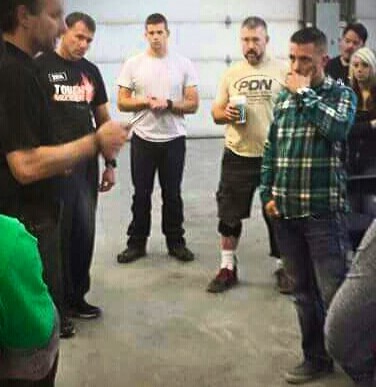
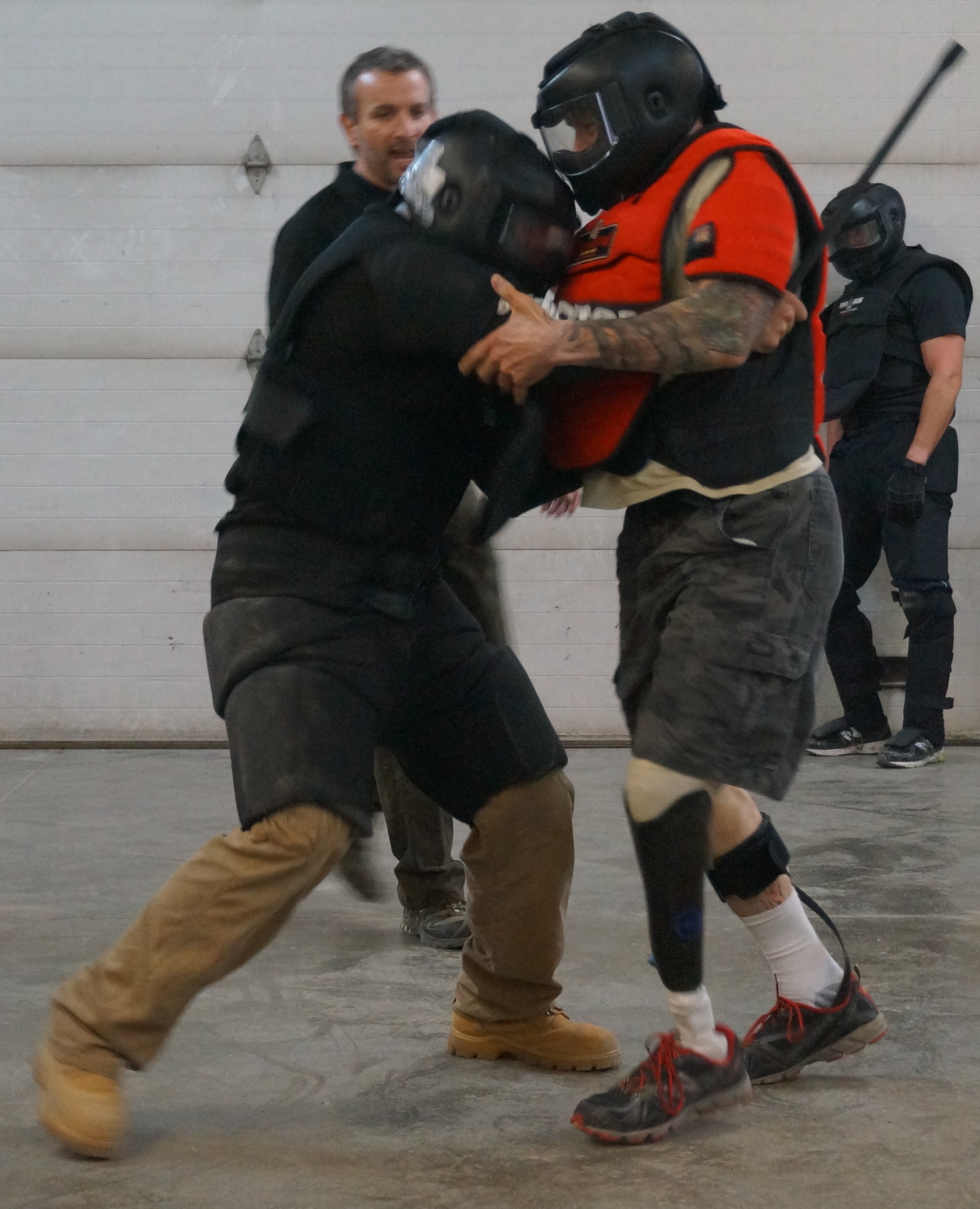
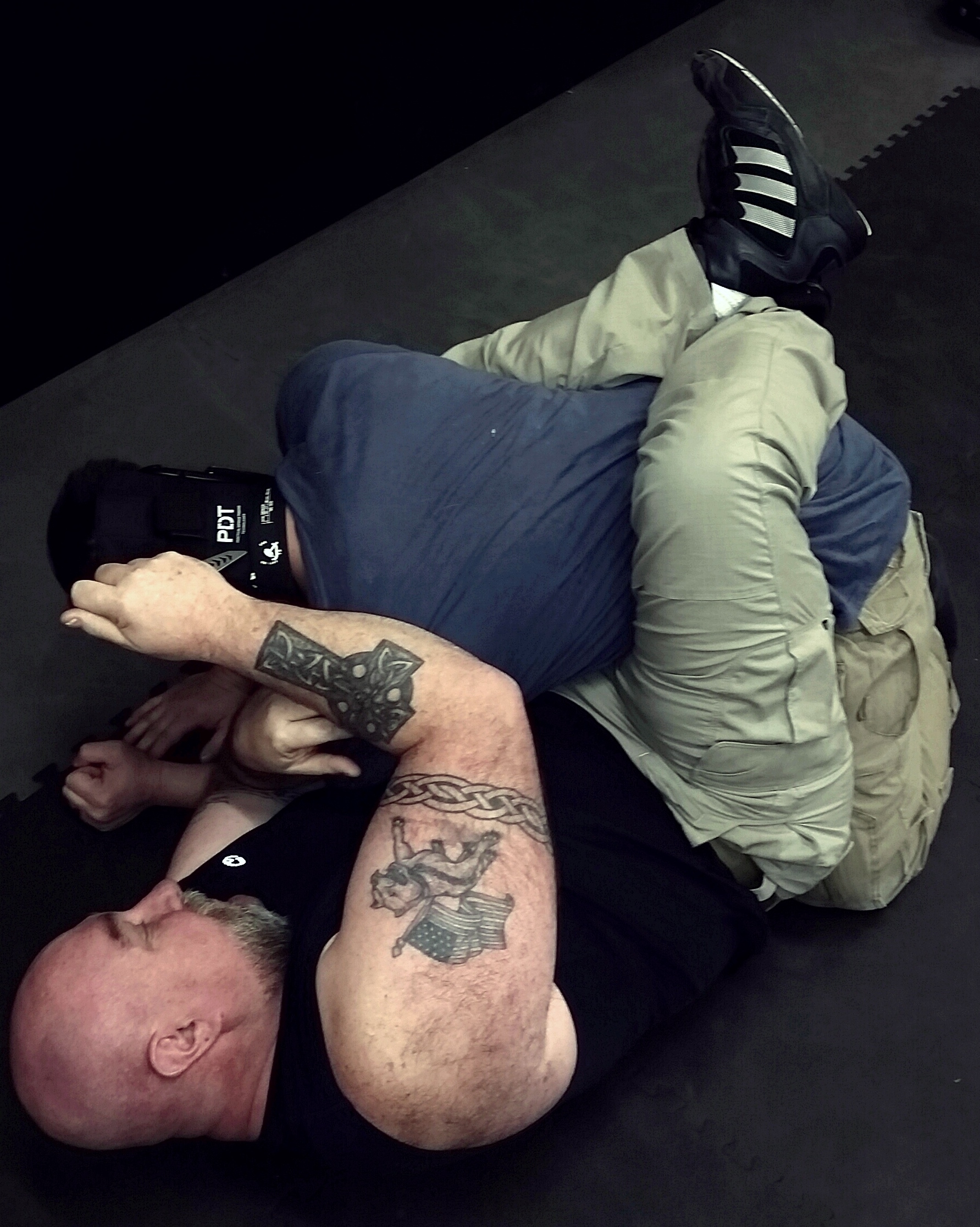
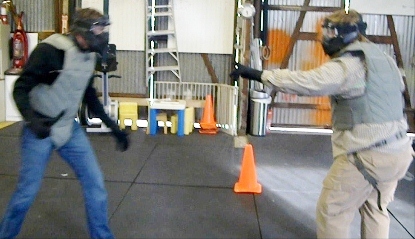
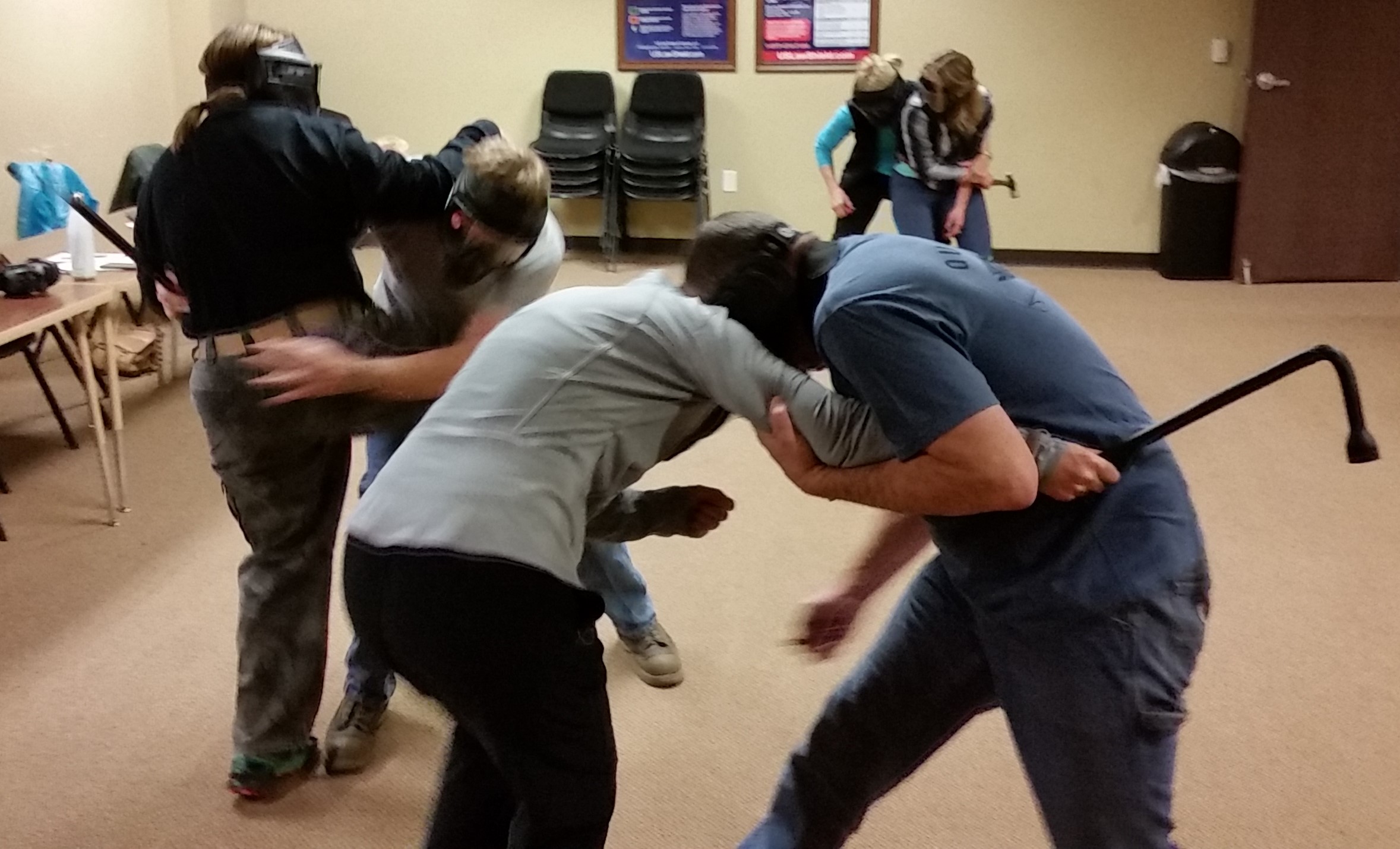
Every time I join you my pass word won’t let me back in I like your classes . See here we go I don’t know my url
am 69 years old. I am not feeble but lack the amity, stamina and strength I had even 20 years ago. So what am I to do? Think I can get in a knife fight with a kid in his 20’s and come out on top? I have my doubts. I’d the reason I carry a gun. Yet I realize that I might not be able to prevent a CQ encounter. What is your suggestion(s)?
Very good article on how to precisely tell all the actions of why or how we perceive our thinking. We do what we do for a reason.
Anxious to learn. Most people are bigger thanI am !
Very Good. Nothing new here, this can be traced back as far as the Roman Army manual and gladiatorial indoctrination ( ' 3 " depth of point penetration is required for a kill' ) .